Graphics Design
10 Simple Doodle Design Ideas to Spark Your Imagination
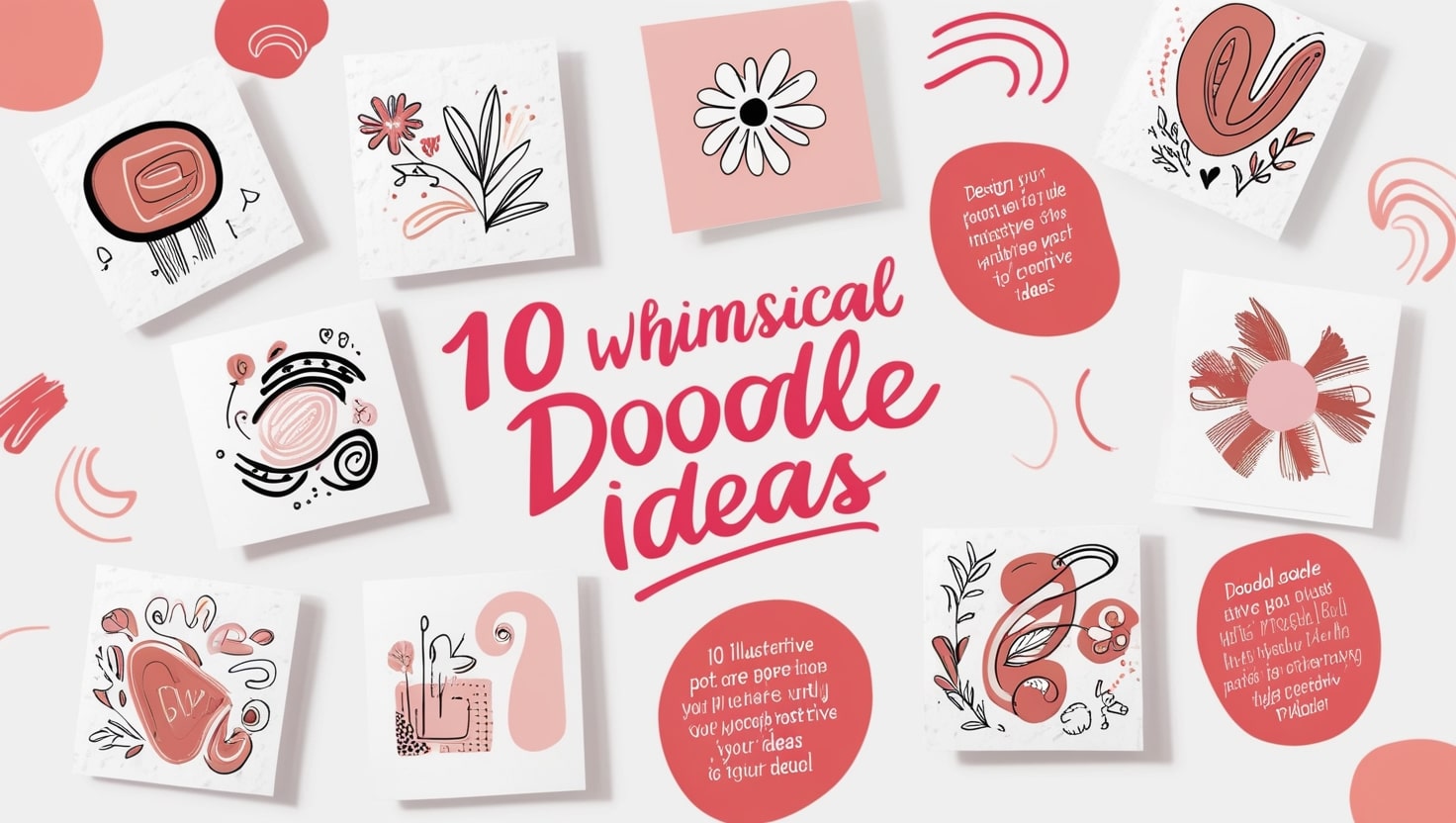
10 Simple Doodle Design Ideas to Spark Your Imagination
Doodle design Jotting is much more than drawing meaningless lines and geometric forms at random; it’s an effective way of people’s creative self-organization, free writing, as well as stress release and more often, inspiration. It can be done by anyone whether one is a professional artist, also a part-time illustrator or a casual sketcher who may from time to time enjoy just sketching or doodling. However in this article, we will be looking at 10 very basic doodle design tips that will help you to give your creative juices a boost.
1. Geometric Shapes

Geometric doodle design will help those people who want to start drawing and do not know where to begin. It consists of simply formations such as circles oval, rectangular, triangular, and linear. Beginning with one shape and manipulating it by reproducing it, or placing it on top of another shape is an efficient way of developing patterned designs from beginning level processes. One of my simpler kind of doodles is geometric and can be rather engaging to make as, while they are rigid and contain some degree of design restriction, there’s still enough area for interpretation.
How to get started:
- Start with creating a number of triangles or squares each as small as the previous one.
- Connect the shapes to achieve a mosaic pattern drawing.
- Puzzle might be attempted by arranging and connecting circles or squares.
This type of doodle design is very suitable for slow draw and one of the simplest ways to fill up a sheet with rhythm and neaten up the whole outlook.
2. Mandala Patterns-Doodle design
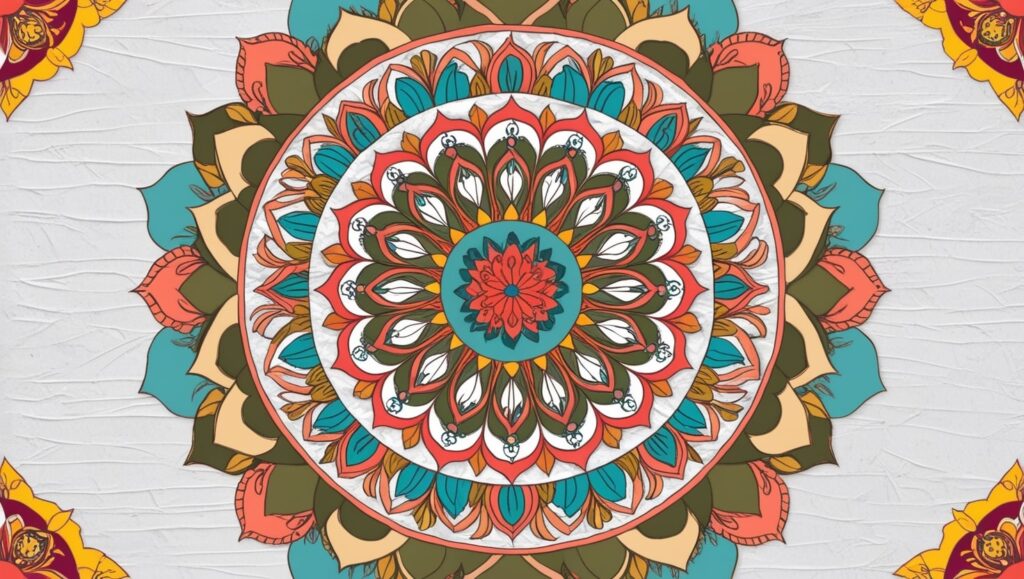
Mandala doodle design is an ancient art form of drawing circles with one or many concentric circles focused on the center. Perhaps more familiar from their use in meditative practices today, mandalas are highly detailed but are much easier to understand once you look for the patterns of shapes the repeating patterns which make them up. Each layer of mandala derives from the previous one so that you develop multiple layers of representation that you can combine in a multifaceted design.
How to get started:
- One should begin with a small circle in the center of the page.
- Add layers of interlocking scrolls in order eventually to cover with arranged repetitions of circles like petals, leaves or geometric forms.
- Always try to align your designs as to create an aesthetically appealing design.
Once you’ve mastered simple mandalas, you can expand by experimenting with different shapes, sizes, and themes.
3. Floral Doodles

The doodle design with flowers are rather traditional and traditional. Extreme simplicity or one petal only to the formal and intricate compositions are possible with the help of flowers as subject, making it one of the most popular doodle choices. It may be just a daisy, sketch down to the stem or the more challenging Rosa, Lilium, and Papilionaceae. Since flowers are naturally grown plants, doodling them makes one employ free form and, therefore, are beautiful if flexibility is what you are looking for.
How to get started:
- Suppose you are asked to draw a basic flower with petals, how many are needed for your structure? Which aspect should you accentuate?
- Try sketching various sort of flowers and also the leaves and stems or/and buds of the flowers.
- After comfortable, format layers of flowers to give more ample pattern.
This means that even if you want your floral doodles to be simple, they still can be simple and yet complex in the same time and vice versa.
4. Animal Doodles
Drawing animals is generally an enjoyable activity however they can turn out to be a little bit tricky at times. First, draw cartoon like animals which are based on primary shapes. Animal doodle design, which can be drawn as cats or dogs or birds or anything else, are a good way to have a bit of fun with the content of the drawing.
How to get started:
- Draw a basic form that is the body of the desired animal (oval or circle).
- Add features of eyes, ears, tails and legs in the simplest method.
- You can improve the design by adding small details such as spots, stripes or even different kind of textures.
This way, you can construct a whole zoo in a drawing notebook, trying different animals on yourself.
5. Abstract Lines and Shapes
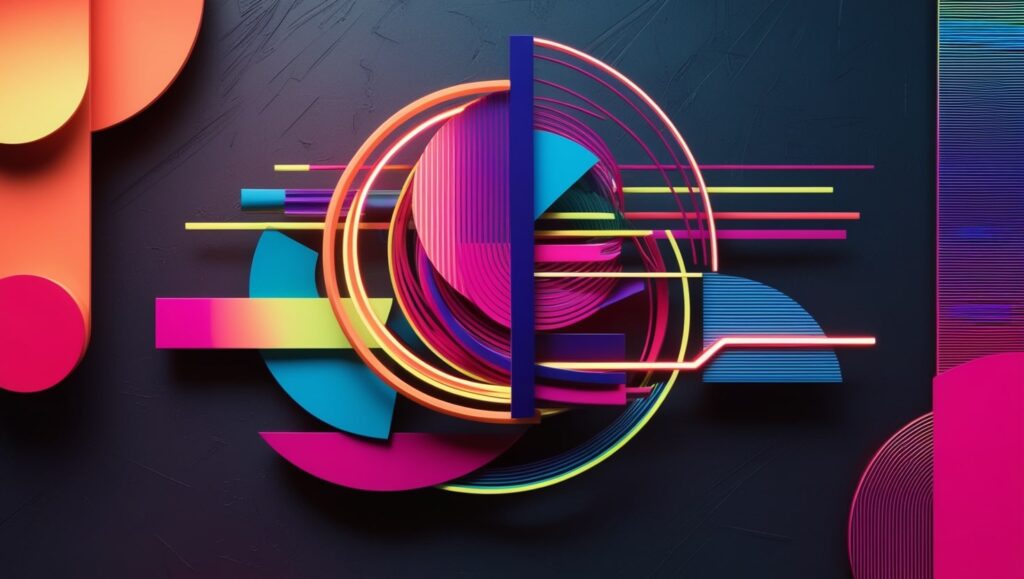
doodle design non-representational drawings also lack prescribed limitation and are probably some of the most liberating ways to be creative on a piece of paper. With abstract doodle design you can just move your hand across the paper and draw lines in circles, curves, motions like zigzag and shapes without any direction. This technique is quite suitable for warming up your creative thinking and trying something new without much restraint for making it look real.
How to get started:
- Take a pen or pencil, and without thinking, impose on a sheet of paper some simple lines or geometric figures.
- It doesn’t matter if they cut across each other, or are completely intertwined.
- Of course, you could fill in some areas with patterns or shading to make the overall picture a little bit more interesting.
It may be called abstract doodles but it is fun, does not stress you out and your imagination will be working overtime.
6. Zentangle Doodles
Zentangle is the art of doodle design in its finest sense where one inserts elaborated patterns within the rectangular boxes provided in a large page. This one is a rather rigid approach, during which you relax and focus on a script while achieving a rather good result in the end. In Zentangle, one can make beautiful patterns regardless of the fact that he or she does doodling!
How to get started:
- Using a light pencil draw several horizontal lines on your page to create several horizontally divided sub-sections on your page.
- In each section, trace a different linear design: dots, single waves or spirals.
- Continuing building and repeating patterns as your website is full.
In Zentangle, one can actually be very keen on the doodle design and in general, the outcome is very good looking.
7. Food-Themed Doodles
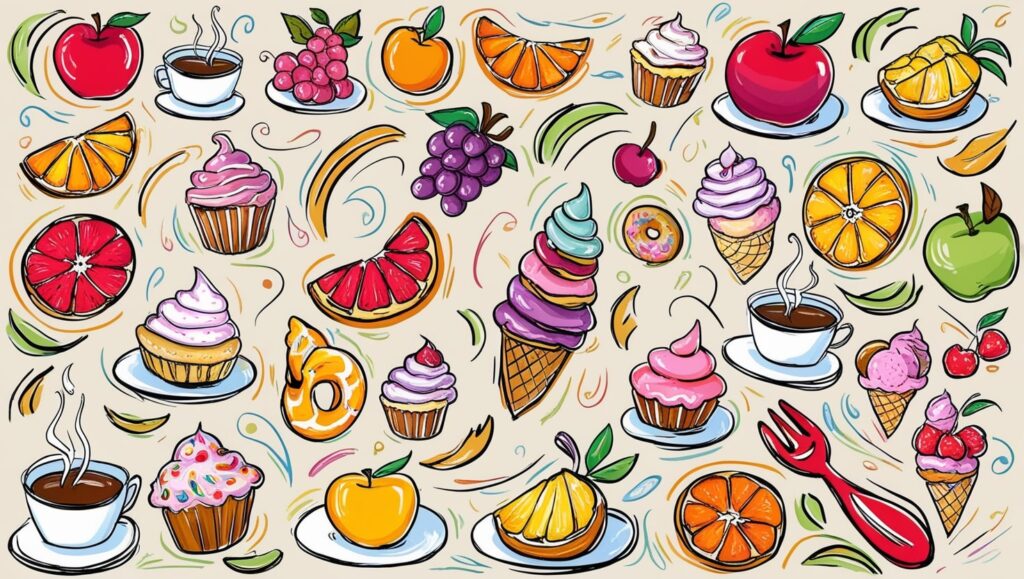
Who doesn’t love food? From coffee to pizza and from apples to oranges, food themed doodle design are as enjoyable as they are entertaining to draw. Preparing combined food items is very good in practicing on the shapes, texture, and colors sections. They can be plain or made playful and you can choose to make your doodles look playful too.
How to get started:
- Begin with easy objects: an apple, a cupcake or a cup of coffee.
- Start with the primary mass of the food and gradually paint its outlines adding the seeds, frosting, or steam.
- Bring personality into the equation, the more dramatic and entertaining step is to shape the food into shapes of faces and even expressions.
Most of doodle design about food are fun and can easily be incorporated into your artwork to create a humorous feel.
8. Word Art and Lettering
Doodle design drawing is not constrained to images; you can even have fun with the text. This picture and graphic design is fun as it enables one to focus on styles, textures, and embellishments of fonts. In fact, regardless of whether you are casually writing your favorite quote or conclusion, the word art doodles lets you practice your typography creativity as you look forward to making more.
How to get started:
- This should begin with the depiction of a word or a phrase in the basic building block forms.
- It is also advisable to add elemrants such as swirls, dots or lines to give the letters that distinct look.
- Use such fancy designs such as 3D effects, shadowing and coloring to make the word stand out.
Word art is perfect for creating posters, cards or just for fun sketching in your sketchbook!
9. Cartoon Faces
Cartoon faces are easy to draw and more to the point, they give you as a beginner a great opportunity to practice on how to draw emotions and characters.. Drawing caricature faces may as simple as starting with a circle and draw funny eyes, noses, and mouths on it. With simple variations of the shapes and the Expressions you get all kinds of moods personalities.
How to get started:
- First sketch the outline by making a circle or oval depending with the head shape you desire.
- There are some primary features which are large eyes, small nose and smiling or frowning lips can also be given.
- Some people seem to have identical faces and trying out different positions or even a new hair-do and new jewelry, etc. everything will look quite different.
This can be actions, plain emotions such as happiness, sadness etc, mild emotions and exaggerated emotions among cartoon characters something that can be practiced in cartoon characters.
10. Nature-Inspired Doodles

For those who like the natural environment here is the inspiration derived from nature itself. Landscape is probably one of the best sources when it comes to doodling because the opportunities to draw something unique are limitless – mountains and trees, ocean waves and clouds. These doodles can be very simple or as complex as you want them to be and the process gives you more way to enjoying art and connecting with the environment.
How to get started:
- First draw one object—begin with a row of mountains or a tree.
- Further fill the main scene with minor details that include birds, clouds, or sun among others.
- As for the deeper layer, try to learn hatching, shading, or stippling what will give your doodles the textures they need.
Nature inspired doodles are very suitable for if you want to free your mind while drawing and getting some sort of peace from the outdoors.
Often, Frequently Asked Questions (Oftentimes)]
- What is required for doodle design?
Doodling actually doesn’t require any special tools at all, all you need is a piece of paper and something to draw with such as a pen or pencil. However, if you want to experiment with colors or different textures, you might use markers, coloured pencils or digital paintings.
- Is it possible for anyone to doodle design or do I have to be artistic in order to do so?
Anyone can learn to doodle! The best thing about doodling is that it doesn’t matter that you are not an artist to aspire to be one. The whole time it basically remains quite playful and the main focus does not lie on being precise.
- How does doodle design enhance creativeness?
Doodling helps to free your thoughts and to come up with ideas not only because of the pressure. It’s an effective tool for helping you come up with different perspectives, to relax and to focus the mind when it wouldn’t normally be occupied during other forms of productive work.
- Is there strategies for using that?
It is advisable to practice with intensity and at the same time or from time to time, you can try different doodling skills. Another way is to focus on ordinary items to apply their design; or can study video lessons to improve skills.
- Digital drawing: Is doodling and drawing the same?
Drawing is a more formal and planned type of dawing as compared to doodle design. I learned that whereas in any traditional drawings one has to take some time, and a lot of effort to ‘draw’ a given picture, doodling is more casual and less formal, therefore more flexible and possibly more creative.
- Will drawing loosen up your mind and assist with unwinding and meditation?
Yes! Drawing is well known as a way to help a person to have better concentration and to reduce stress levels. Some of the styles that work well with mindfulness are mandala or even simple doodles that you get when doing the Zentangle.
Conclusion
Doodle design Drawing is actually one of the best activities for imagination because it allows you to become a creator. Whether you are sketching geometrical patterns, cute animals or complex flowers, and sophisticated patterns of mandalas, it is all possible. Use the following doodle design tips from this read, and see how your skill and creativity develop. Happy doodling!
Graphics Design
Top 5 Mistakes to Avoid When Designing for E-Commerce Store
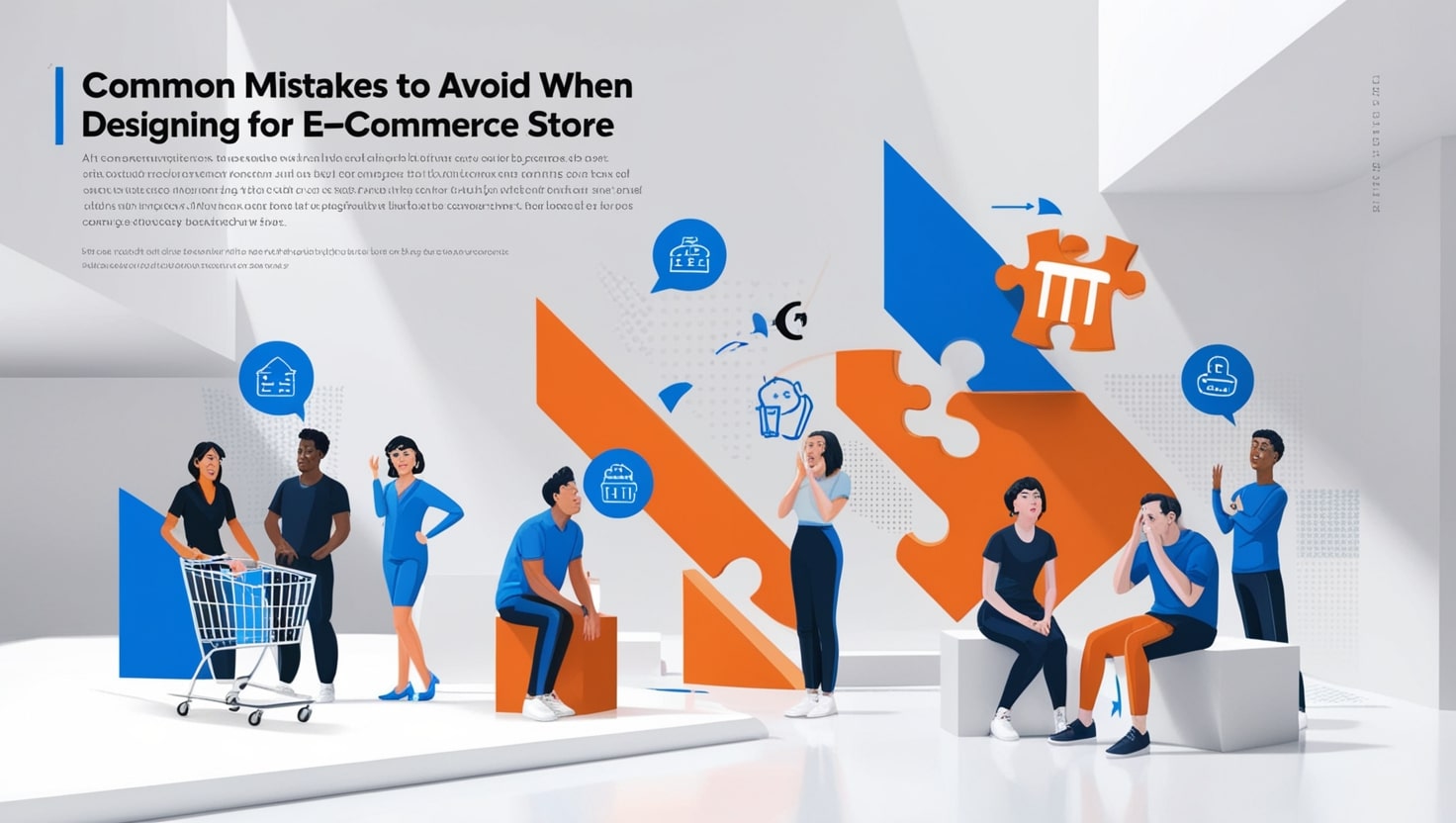
Top 5 Mistakes to Avoid When Designing for E-Commerce Store
More than ever before, an designing for E-Commerce store is vital when one considers the modern consumer who is always on the go. However, not all e-commerce stores are unique or the same in their concept and design. Most companies encounter some of these mistakes when designing their e-commerce sites, making them not only visually unappealing but also ineffective and economically ineffecive. Here are the five prominent mistakes which if avoided by you would go a long way in the over all designing of your e commerce store.
Outline
1.Introduction
- Importance of design in e-commerce success.
- Brief overview of the article.
- Mistake 1: Having No Mobile Receptor
- Importance of mobile-friendly design.
- Consequences of neglecting mobile users.
- Tips for ensuring mobile optimization.
- Mistake 2: Overcomplicated Navigation
- Common issues with poor navigation structures.
- Best practices for simple and clear navigation.
- Mistake 3: Neglecting Page Load Speed
- Common causes of slow load times.
- Tools and tips for optimizing page speed.
- Mistake 4: Poor Product Page Design
- Importance of visually appealing and informative product pages.
- Errors to avoid when designing product pages.
- Examples of effective product page elements.
- Mistake 5: No Specificity of the Call to Action (CTA).
- Common mistakes in CTA placement and design.
- Tips for creating compelling CTAs.
- Conclusion
- Recap of the top five mistakes.
- Encouragement to implement the suggestions for better outcomes.
- FAQs
1. Introduction
Building an designing for E-Commerce store is not an easy thing. This is especially true of a competitive market where the customer demands a smooth shopping experience: … Nothing is unimportant here not the time it takes to load your site or the way your call-to-action buttons are placed. Well let’s deepen into the five fatal e-commerce design mistakes that you should avoid.
2. Mistake 1: Having No Mobile Receptor
You might be surprised but in fact 62% of online shopping accesses is made from a small screen device. That said, most online stores are able to provide subpar mobile experience to users. If your site looks and/or works poorly on smartphones or tablets, then a great portion of your audience will be turned off.
Why It’s Important
Designing for E-Commerce store everyone wants one experience regardless of if they are using a mobile, laptop, or desktop machine. What designers fail to do is create their sites mobile optimized and hence, the high bounce rates and low conversion rates. Google also cares about mobile-first indexing, meaning that making this aspect unnoticeable may harm your SEO standing.
How to Avoid It
- They should be fully receptive design framework to make the site responsive to all forms of the layouts.
- Take your designing for E-Commerce store through usability testing on different gadgets to determine areas of poor performance.
- Remove any unnecessary elements from the images to avoid slowing down a page when accessed on mobile phones.
3. Mistake 2: Overcomplicated Navigation
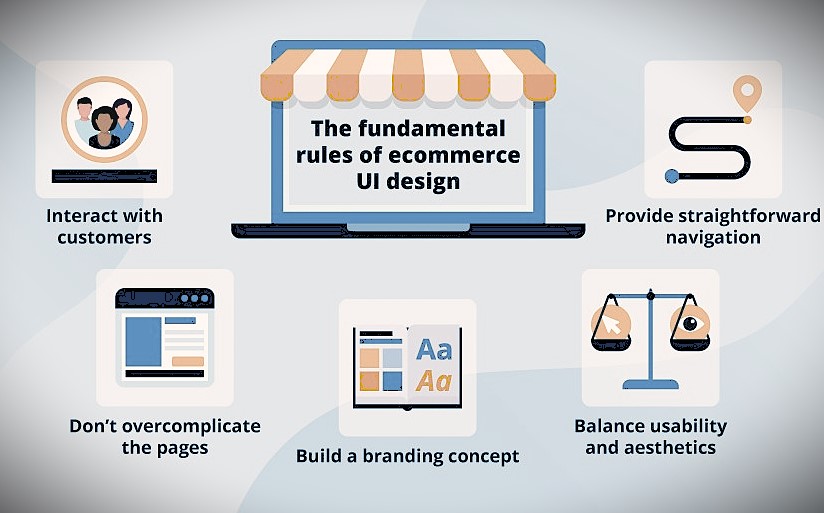
Designing for E-Commerce store ever got to the physical shop only to feel like you have no idea where this product is located?. That’s how users feel when your site’s navigation is confusing or cluttered When users of a site or application are described as lost or confused it usually means that they find the site navigation either complex or cluttered. These problems mean that a poorly designed menu or search function can have customers leaving your site.
Common Issues
- Too many menu categories, in other words excessive division of menus.
- Absence of a search bar, or if it is present then a poorly designed search bar.
- There are situations when breadcrumbs do not have clear and obvious navigation that would allow the users understand their present position.
Best Practices
- Don’t overcrowd your headers and subheaders and make it easy for customers to find products they are interested in.
- They recommended to integrate a large, highlighted search bar that includes a prediction of the future search.
- Make sure users know where they are on the site; you can use breadcrumbs to this end.
4. Mistake 3: Neglecting Page Load Speed
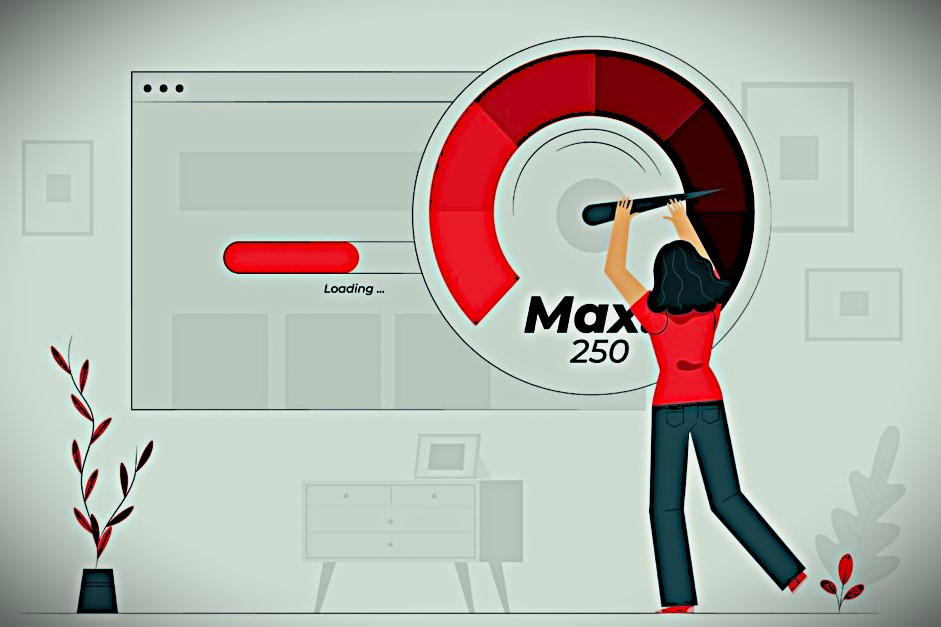
Designing for E-Commerce store i think no one enjoys such inconveniences such as waiting for the page to open especially in an age where everything is expected to open at the push of a button. This means that any variation in the loading time of an individual page in a website can lead to a decline in the conversion rates,; for instance, when the loading time is increased by one second, the conversion rate is likely to reduce by 7%.
Causes of Slow Load Times
- Designing for E-Commerce store large images and other media types.
- Way too many plugins or third-party scripts.
- Loading more work in a low-specification server.
How to Improve Load Speed
- Designing for E-Commerce store optimize pictures and try using formats such as WebP.
- Reduce accesses to page through the use of one CSS and one JavaScript file.
- Ensure that your hosting provider is of high quality; also ensure that you host your content through a CDN.
5. Mistake 4: Poor Product Page Design
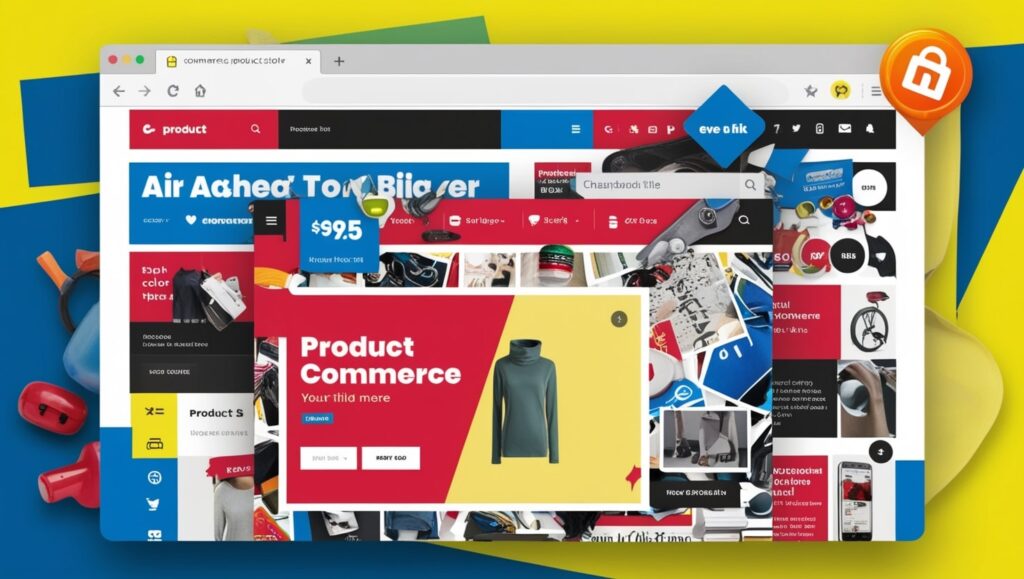
Designing for E-Commerce store your product page is where it is at — this is where consumers either decide to click on ‘Add to Cart.’ Yet, most retailers do not make well thought out and persuasive product pages.
Common Product Page Errors
- Absence of good pictures or clips.
- Lack of detailed product descriptions or in certain cases nonexistence of descriptions at all.
- Designing for E-Commerce store the customer gets confused when the service provider provides what they need and much more.
What Works
- Provide the images in a high quality and make sure to have pictures from at least two different views and have zooming ability.
- Provide elaborate persuasive remarks underlining the specifications of the product.
- Increase the trust features such as, reviews, ratings, and stock availability.
6. Mistake 5: No Specificity of the Call to Action (CTA).

Designing for E-Commerce store often, your CTA buttons are the only force pushing towards your conversion. Without them, your visitors will not be aware of what they are supposed to do next. Although the use of properly designed and positioned call to actions can entice users, poor design or placement of the call to action can ultimately repel them.
Common Mistakes
- The of gardening CTA’s that are not necessarily immediately visible but act as a screen.
- Using such phrases as “Click Here” instead of such terrific phrases as “Proceed to the Next Step”.
- Putting CTAs in areas not so prominent.
Tips for Better CTAs
- Ensure the CTAs are noticeable by using Color contrast in page designing.
- Use very brief text and there is the use of communication calls to action such as “BUY Now” or “GET started”.
- Put CTAs in the visible area of the page and use theirCalibri versions below the fold and in the middle of the page.
7. Conclusion
Designing for E-Commerce store creating an online store requires much more than aesthetics, it involves the functionality and ease of use. To sum it up, eradicating pitfalls in a web design journey such as negativity to mobile friendliness, overcomplication of navigation section, negligence of page load speed, improper design of product page and poor management of CTAs will help one go a long way. The following are some best practices you can put in practice to develop an arresting shopping experience that is appealing to the customers.
FAQs
- Why is the concept of mobile responsiveness so valuable?
As a result of most of the clients using their mobile devices to access e-commerce sites, a well-designed site must have great designs that are friendly and easily viewable on small screens so as to retain the customers and increase sales.
- But how does navigation affect the customer’s satisfaction as he interacts in the organization’s operations.
Lucid layout of any online store’s website ensures that customers are easily guided to what they want, thereby be making their experience better and the chances of them buying something better.
- What can I do to increase page speed?
With Google PageSpeed Insight, GTmetrix, and Pingdom, you can easily discovers speed problems with any Web site you own.
- What makes a good product page is usually something like this:
Hence, a well designing for E-Commerce store product page has good quality images, detailed and convincing copy, customer feedbacks and product offer details such as price and availability information.
- What is the best way to design CTAs for my store?
Designing for E-Commerce store most importantly, adopt action initiating language and make your call to actions conspicuous by using color contrasts and placing them appropriately in the website.
Graphics Design
5 Hidden Features in Popular Vector Graphic Editors You Should Be Using
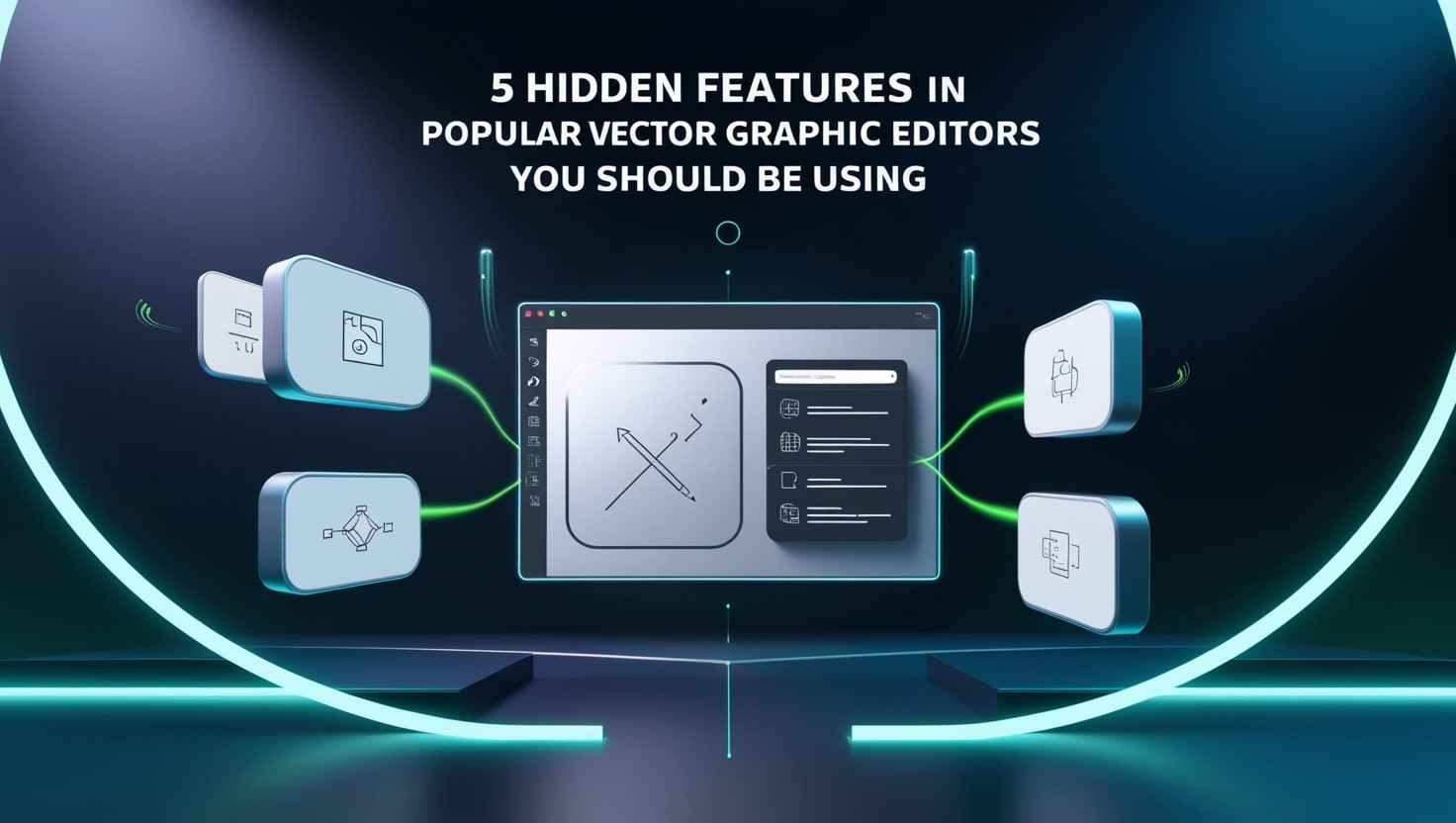
5 Hidden Features in Popular Vector Graphic Editors You Should Be Using
Raster graphic editors have been in use for as long as computer graphics has been in existence, however, vector graphic editors seem to be taking over the market since they are a suitable tool for designers, illustrators and artists as well as being very vital for logos, illustrations and detailed artwork since the designs are scalable. Predominant modifying software programs like Adobe Illustrator, Corel Draw, Affinity designer, and Inkscape come with great characteristics that users ignore. Unlocking of these hidden capabilities may lead to increased efficiency, extended uses of creativity and most important could help minimize the shipment of inefficiencies.
This article takes you through five lesser-known features in most of the vector graphic editors you should use. Regardless, the director is an experienced using these tricks can enhance your design and make the editing process more user-friendly.
Table of Contents
- Beginners Guide to Vector Graphics Editors
- Advantages of utilizing Hidden Features
- Feature 1: Enhanced Blending, Mix and Gradient Algorithms
- Feature 2: More Complicated Shapes with Shape Builder Tool
- Feature 3: Real Time Corners and Corner Modifications
- Feature 4: Symbol and Reusable Parts
- Feature 5: Appearance and Graphic Styles
- Implementing the above guidelines will help people to master these features:
- Conclusion
- FAQs
Beginners Guide to Vector Graphics Editors
Vector graphics editors are as the graphical editors that let artists and designers create artwork founded upon mathematical paths, not pixels. Vector graphics, on the other hand, do not degrade with size – the graphics are adaptable to size, and are not limited to resolution. This makes vector graphics a must use tool for any projects that would be required to be scaled possibly for logos and other illustration based projects.
Advantages of utilizing Hidden Features

Apart from the basic set of features and tools, most designers work with within their vector editors, those programs contain a dozen of unexpected features that designers usually do not take notice of. Utilizing these can:
- Save valuable design time.
- Expand the variety of designs and simplify the management of them.
- Decrease number of activities that are time consuming and add little value.
Now let’s take a look at these hidden features that can dramatically alter how you work on your designs.
Feature 1: Enhanced Blending, Mix and Gradient Algorithms
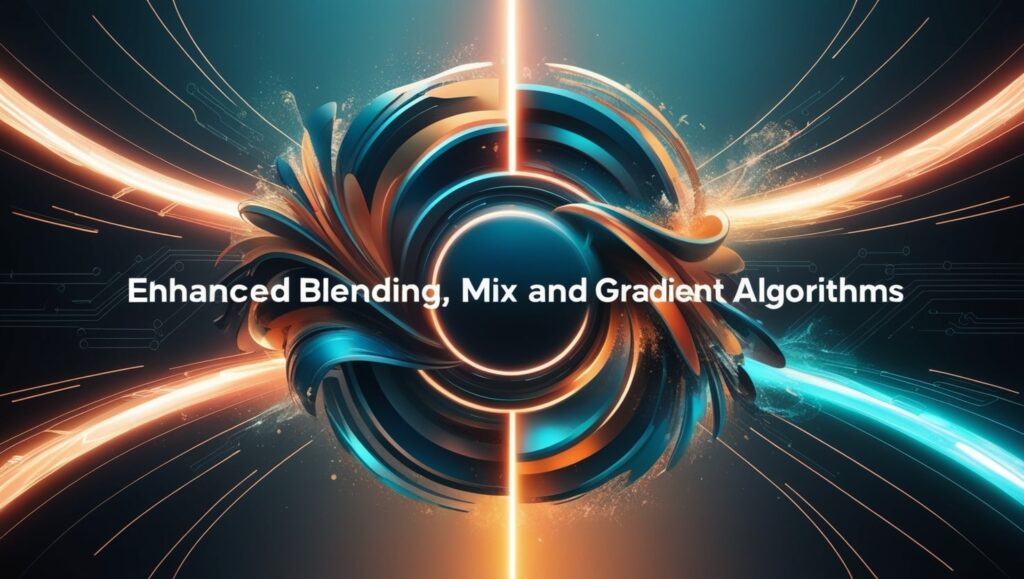
Combining modes in the creation of vector graphics.
Vector graphic editors transparency is another property under modes that enable the designer create great artwork by combining shapes and colors. Standard programs such as Adobe Illustrator for example, have some of the more sophisticated blending features that are not commonly applied. The case of blending modes enables you to superimpose the colours, cast a shadow or even bring out the effect or lighting of the structure and this enrichens the graphic worth of your drawings.
Two Technical Meshes are Gradient Mesh and Freeform Gradients.
Vector graphic editors shades are necessary for creation of depth in two-dimensional art works. However, most designers are content with using simple linear or radial gradients while ignoring more tools such as The Gradient Mesh in illustrator or Mesh Gradient in Corel draw. They allow designers to paint a shape several color variations and take a realistic look on its models.
How to Use Blending Modes and Advanced Gradients:
- Experiment with Modes: Preferably in Illustrator, choose an object and then click on the “Transparency” option. Just experiment with blending options: “Multiply,” “Screen,” and “Overlay” to understand how the colors work.
- Use Gradient Mesh: To create meshes in Adobe Illustrator start with selecting *Object > Create Gradient Mesh*, this gives control as to the color transitions within an object.
Feature 2: More Complicated Shapes with Shape Builder Tool
Most vector graphic editors come with the Shape Builder tool which is often overlooked despite being very ideal in developing complex designs from basic shapes. This tool allows you to add, subtract and ‘clip’ where one shape cuts into another to create new shapes only where both overlap.
Benefits of the Shape Builder Tool
The shape builder tool is amazing and can save hours of work, especially if you are working on, let’s say, logos, or complex illustrations. Instead of using Boolean operations which can be quite restrictive, the Shape Builder offers more direct form control on shapes.
How to Use the Shape Builder Tool:
- Select Your Shapes: Vector graphic editors superimpose one or two shapes from simple geometric shapes on each other.
- Activate Shape Builder: Vector graphic editors there will be many shapes on the artwork space in Adobe Illustrator Therefore from the toolbar, select all the shapes and use the shortcut *Shift + M* to activate the shape builder tool. You can select multiple areas of the shape, and then join them into one by shift-clicking, you could also use the *Alt* key to delete some part of the shape.
Feature 3: Real Time Corners and Corner Modifications
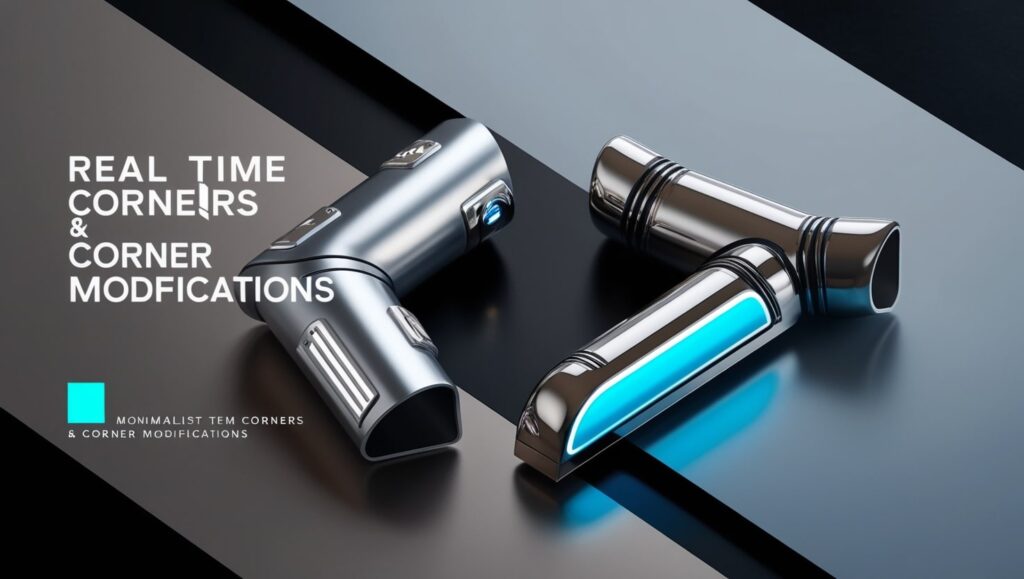
Round corners are seen today as a sign of new age design, both in user interfaces and iconography. But most designers do not know that the current vector graphic editors live corners that enable the adjustment of the corner style and radius. It is also available in Adope Illustrator, Affinity designer, and Corel draw.
Some of the corner customizations include the following;
Vector graphic editors these include the corners you make live corners that allow you to put rounded or inverted and chamfer corners on any figure. Hence, they do not need to drag anchor points or apply the effects, which make the design more efficient and accurate.
How to Use Live Corners:
- Select the Object: Select something with corners for example a rectangular shape.
- Adjust Corner Radius: To do this, locate three controls near the corners of the rounded rectangle shape, these are circular in shape: one large and two small circles Want to make it bigger? Drag the small circle to the larger circle. To select various corner types go to the “Corners” panel with options Round, Inverted,
Feature 4: Symbol and Reusable Parts
Vector graphic editors with symbols, you have an opportunity to use a template through your designs when creating something that has similar parts such as icons, buttons, or patterns. This is why when you classify an object as a symbol any modification made to it will reflect on all the designs done on it thus saving a lot of time.
Pros of Symbolism of Vectors
In web and UI and branding projects that need to be consistent, symbols can be very helpful. Many vector graphic editors software, such as Adobe Illustrator, CorelDRAW, Affinity Designer, and more include symbols or components with the same functionality.
How to Use Symbols in Vector Graphics:
- Convert to Symbol: Choose an object and in Illustrator navigate to *Object > Symbols > Create Symbol*. Identify a symbol and describe the conditions for using it.
- Reuse and Update: Vector graphic editors put the symbol wherever necessary. Changes, edits, deletions, in other words, any alterations made to the first symbol will alter, delete or edit in all symbols.
Feature 5: Appearance and Graphic Styles
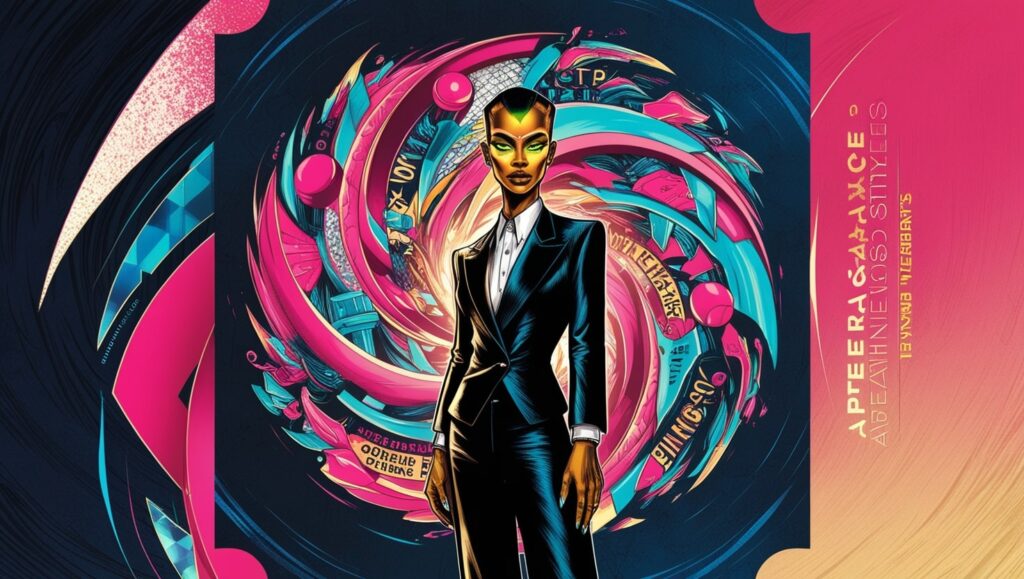
Many vector graphic editors have what is known as an *Appearance* tab (or something to that effect) that enables a number of fills, strokes, and effects to be applied to the object while it remains one object, effectively creating multiple layers of appearance. In Graphic styles, what one does is save these appearance effect then apply them to on other objects so that there is much uniformity in the appearance.
To add fills and strokes, you should click the ‘multiple fills and strokes button.
In other words, the use of layers of fill and strokes allows placing of textures and shadows without designing additional shapes. This feature is particularly effective in Adobe Illustrator where Appearance panel can be merged with Graphic Styles feature.
How to Use the Appearance Panel and Graphic Styles:
- Apply Multiple Fills and Strokes: To add multiple fills go to the *Appearance* panel and click the “Add New Fill” button, and for multiple strokes use the “Add New Stroke” button.
- Save as Graphic Style: Once you have the desired look, save it as a graphic style by going to the *Graphic Styles* panel and selecting “New Graphic Style.”
Implementing the above guidelines will help people to master these features:
- Practice Regularly: Vector graphic editors as with most skills, the extent of knowledge about the features increases the more one deals with them. Gradually add one feature at a time into your working process and then the new feature will become an integral part of that process.
- Use Tutorials: It is possible to find Vector graphic editors communities and easy to follow tutorials on the internet which explain how it is possible to master them.
- Experiment with New Tools: Do not hesitate to visit all options that are available on the editor of what you are writing. Trying different tools together is a good way of discovering new ways in the design process.
Conclusion
There are many more hidden opportunities in vector graphic editors such as Adobe Illustrator or Corel draw or Affinity designer are helpful to improve the flow of the design and increase the effectiveness of the work, as well as to explore new opportunities. From advanced gradients and live corners to reusable symbols and graphic styles, these are the kind of products that are critical for any designer.
These techniques can help your designs look impressive without spending too much time re-creating similar elements time and again if you use them combined. Discover these features and witness how they change the way you work and how creative you become.
FAQs
- It is possible to use these features in free vector editors like Inkscape?
In fact, there are many of these features available in Inkscape with slightly different names or possible slightly different functions. The other features in Inkscape include the blending modes, the node editing tool which is just like the Shape Builder and the Symbols.
- Are these features offered in all the editions of Adobe Illustrator?
A majority of these features can be found in contemporary illustrations of this software. If you’re using an older version, you might be lacking some updates, and those are Freeform Gradients and Live Corners.
- What should I do if I would like to get better at using vector graphic editors?
Combining this with practice, search for lessons provided on and work with all the available instruments in your editor. Design communities should also be joined to get more information and tips.
- Does the presence of these features retard the design process?
These features are meant to make the work easier for users. In fact after a while of knowing them, they make things go faster for you and eliminate anything routine.
- Where are some good places i could learn about the vector design techniques?
In the tutorial section of this article, let’s take a look at YouTube’s Skillshare and Udemy for comprehensive videos on vector graphic editors. More so, there are official sources from Adobe, Corel, and Affinity, which contain information regarding enhanced features.
Graphics Design
Top 10 Essential Digital Design Trends to Watch in 2025

Top 10 Essential Digital Design Trends to Watch in 2025
With the year 2025 on the horizon, the possibilities of digital design have seemed to reach an exponential rate. As these new technologies, evolving users’ expectations and new creative tools are available, the designers are questioning how they interact, how they en-gage as well as how the visually framing the relationship with the audience. Innovative design experiences, crystal clear functionality, and back to simplicity design aesthetics are some of the top 10 must-have genres that many technologist believe will distinguish the year 2025.
1. Hyper personalized user experiences
With the constantly increasing focus from the users on more personal, unique and interesting experiences, users have posed significant emphasis on hyper-personalization. Digital design platforms with the help of data analytics, AI and machine learning can deliver content, designs more personal and recommendations for each user. This trend goes beyond a simple approach to individualized interfaces or more localized notification and content delivery.
- Examples: Automatically adjustable interfaces, customized appearance, and AI suggestions for content.
- Impact: More traffic, enhanced customers’ loyalty, and better conversions levels.
2. How Augmented Reality (AR) and Virtual Reality (VR) may be integrated?

Both AR and VR, as the aforementioned technologies, have changed the way users engage with digital content and their application in the design of daily digital products is growing at 2025. Be it, trying out clothes and accessories in online shopping AR and VR enhance all digital experiences.
- Examples: Virtual fitting rooms, AR maps, VR tours for the flats.
- Impact: Higher interactivity, better user experience and satisfaction, and better customer experience.
3. 3D Graphics and Realism

3D graphics is all set to gain an even plus, especially when the Web technology makes the graphics loading faster and more seamless on the screen. Programme depth, engaging content, production of primary 3D elements, accurate animation, and nice digital design environments are some of the effects.
- Examples: A product illustration refers to the product renderings, 3D interfaces as well as lie like animations.
- Impact: Higher stickers, better recall of advertisements, and a more tasteful and attractive impression.
4. Micro-Interactions for an Improved Interface.
Micro-interactions, being small and often discrete animations or feedback, are a key means of directing users through screen environments and making interactions feel natural. They make users aware of an action they have taken, bring character to interfaces, and act as feedback indicators.
- Examples: Button states when clicked, when loading a new page or data, swipe gestures.
- Impact: Increased user activity on a Web site, enhanced Web-site navigation and overall user satisfaction.
5. The two areas most associated with voice are Voice User Interface (VUI) and Voice Search Optimization.
With the increased development in the voice technology, there is increased use of voice assistants such as, Alexa, Siri and Google Assistant. This trend has motivated designers to start digital design thinking beyond use of the display screen and focus on designing for voice.
- Examples: Voice navigation, Personalised voice commands, Voice consequent visuals for voice inputs.
- Impact: More availability of web content, enhanced usage with the help of effective simultaneous access, and concentration on the persona surfing the web when the hands are busy.
6. Sleek Design Aesthetics that Mean Business

Digital design although its use has been witnessed for the last few years, 2025 was a year that is described to have optimal minimalistic designs, which are potent. It employs Big Type, inventory wording, and large-scale graphics, color coding to pass masses’ messages without noise.
- Examples: Broad photo collages, thick fonts, few line symbols.
- Impact: Digital design improvements to the home page loading times as well as layout to make it a more intuitive and sleek looking website.
7. Sustainable and Environmentally Friendly Architecture
Due to environmental concerns, there is currently emerging green digital design. Currently, designers have developed environments that are friendly to nature whereby they digital design products that consume little energy, support a feature that completely blacks out the interface, and practice reductionism.
- Examples: Dark themes, low energy color schemes, green web hosting.
- Impact: Reduced carbon footprint, appeal to eco-conscious users, and positive brand perception.
8. Artificial intelligence for Designing Tools and Automation
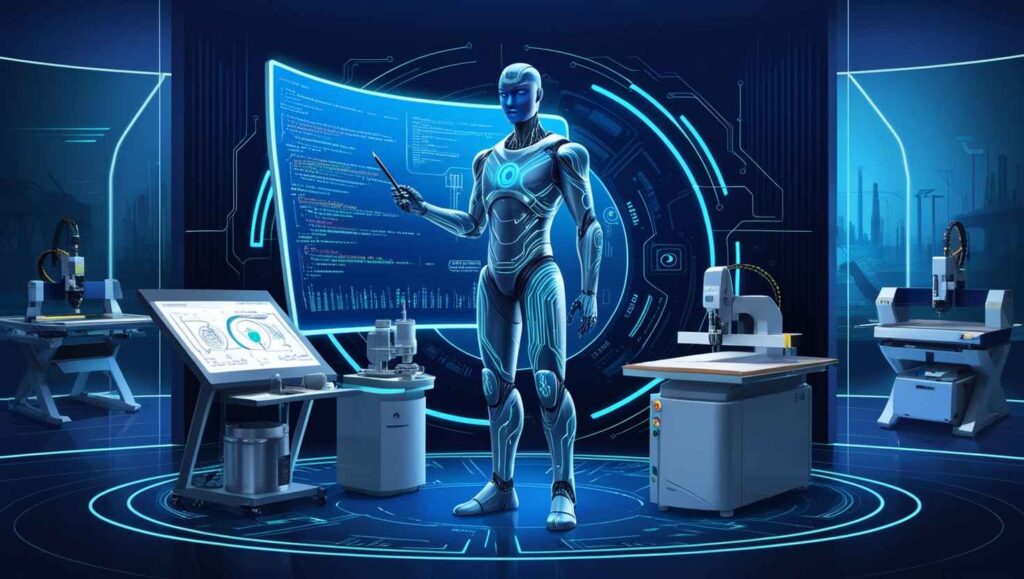
Artificial Intelligence is revolutionizing the way designer approach a project and or objects by providing basic design solutions, analyzing the work and offering suggestions and recommendations as well as providing content. Through technology, the role of a designer is shifted towards creative work and in the process make the designer more efficient.
- Examples: image enhancement, recommended layouts, text and graphics generation.
- Impact: Quicker product design, guaranteed quality, and more time on the creation of ideas.
9. Fresh and daring advertisement text
Typography remains an important aspect in digital design and future projections show that the year 2025 unveils more radical and powerful fonts. Today, websites and application developers depend on fancy freedom fonts and text positioning for attention and brand identity.
- Examples: Fractals, overextension, active typography, cluttered typography.
- Impact: The children shall get a stronger brand identity, better readability, and enhanced visibility.
10. Home design for seniors and people with disabilities

Such brands even though they are part of key brands, do not cater for the need of the society but inclusive design has become the core fabric within designs. Companies are integrating usability and functionality for disabled people in the digital products they launch into the market. High contrast text, closed captions, alt-text descriptions, keyboard navigation and other best practices are practices in inclusive design.
- Examples: Accessibility, well-managed user interface and clear descriptions of the pertinent components Underline Control of the font size meeting).
- Impact: Again, more accessibility, more clients, and concordance with the ordinances.
Conclusion
The major trends in the digital design of the year 2025, as followed, are a combination of technology, usability and sustainability. Some important trends include personalization interfaces, sustainability in design, and embracing new challenges; all of which reflect the industry’s ability to satisfy its customers. While following these trends may be beneficial for designers and businesses alike to stay ahead of the curve and thus result in building meaningful and effective experiences for users.
FAQs
- Hyper-Personalized User Experience in Digital Design, what is it?
First-degree personalization virtually customizes virtually every aspect of a user’s digital experience based on data, AI, and machine learning algorithms. While extending the idea of personalization for every user and customer it changes interfaces, content, and recommendations in real-time.
- Why can augmented reality (AR) be valuable for the digital design in the year 2025?
AR offers the capability for most engaging with a user since interactive elements are superimposed on the real environment. AR for businesses will enhance the user interaction, unique product touches, and immersive branding.
- What is thus left to be said about inclusive design and user experience?
Accessibility of the design creates an intake of individuals with impairments and disabilities to enhance their experiences. It also assists businesses in gaining a larger customer base, increases accessibility and can also benefit in increased customer allegiance.
- Micro-interactions: what they are; why it matters.
Micro-interaction can be defined as micro animations or design gestures that both inform users and give feedback on actions. It improves the ease of use, ensures that the interactions with the website are effortless and memorable and in general, fun.
- Why has sustainable design become a trend to implement in 2025?
Sustainable design domain focuses on the energy consumption of the developed digital products and encourages sustainable ways. It appeals to the green consumers because consumers tend to support a brands that are has taken a stand to fight the problems affecting the environment.
-
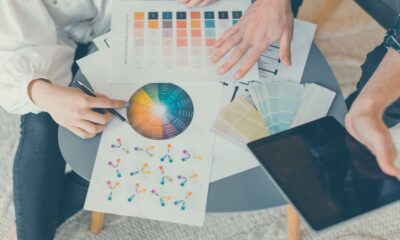
 Graphics Design8 months ago
Graphics Design8 months ago7.Exploring the Importance of Color Theory Charts
-
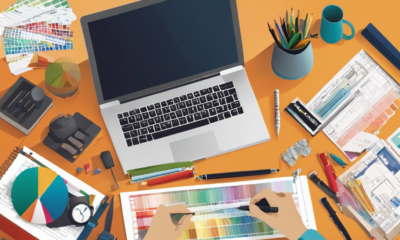
 Graphics Design7 months ago
Graphics Design7 months ago14.Mastering the Art of Print Design: Tips and Tricks
-
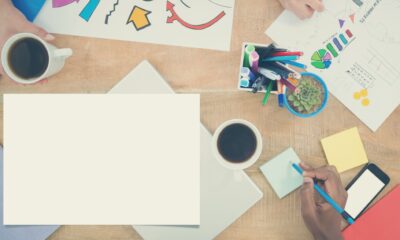
 Graphics Design7 months ago
Graphics Design7 months ago15.The Importance of Effective Flyer Design in Marketing
-
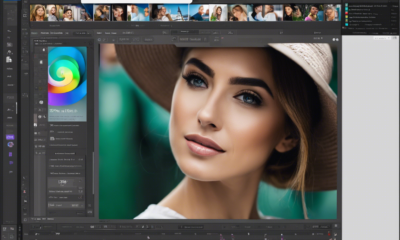
 Graphics Design7 months ago
Graphics Design7 months ago13.Exploring the Latest Trends in Photo Editing Software
-
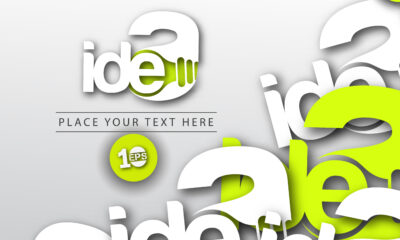
 Graphics Design8 months ago
Graphics Design8 months ago1.The Transforming Power of Typography on Graphic Design
-
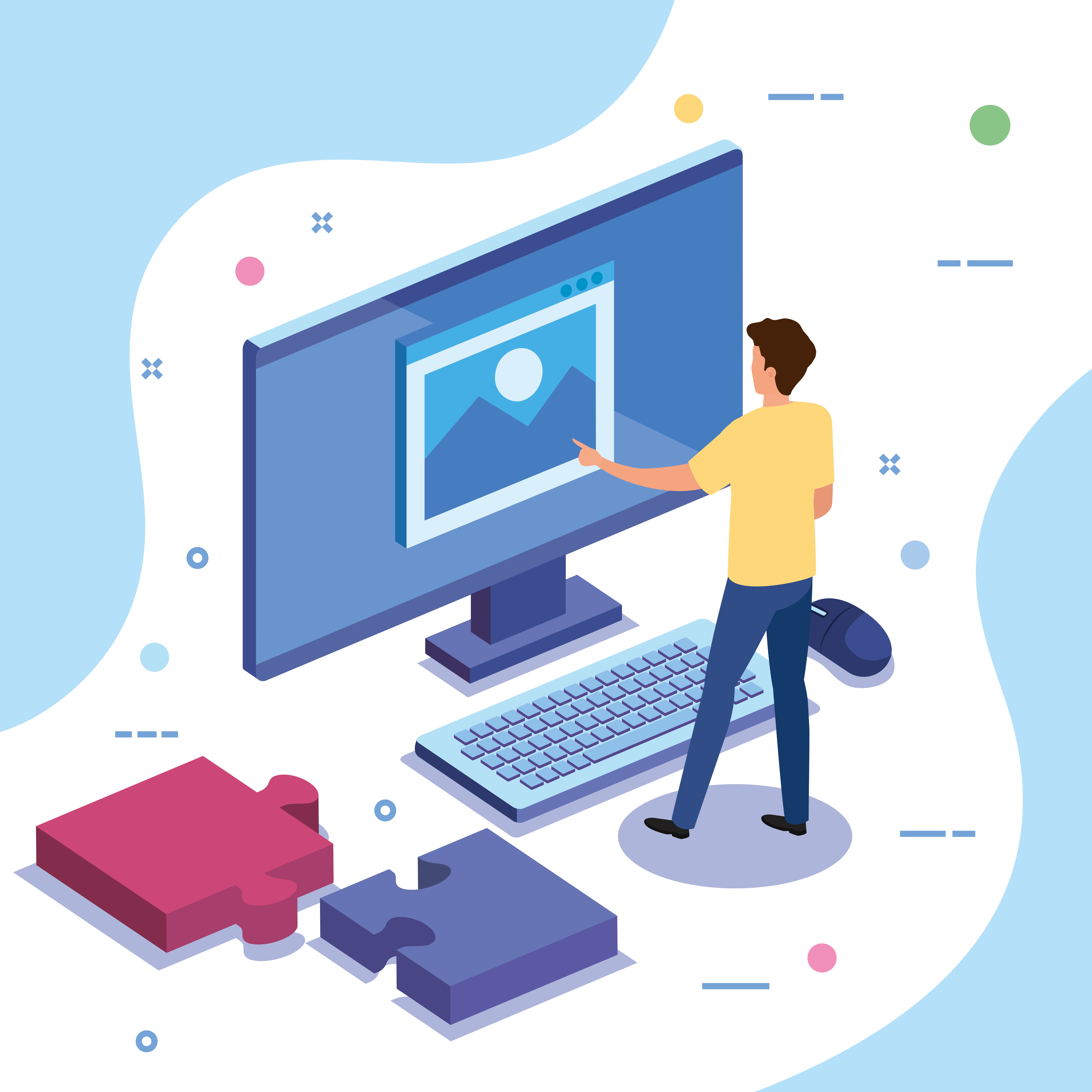
 Graphics Design8 months ago
Graphics Design8 months ago8.The Evolution of Vector Graphics Software
-

 Graphics Design5 months ago
Graphics Design5 months ago29.Retro Design Is Making a Comeback in Modern Spaces
-

 Graphics Design6 months ago
Graphics Design6 months ago20.The Evolution of Responsive Design: Past, Present, and Future





mail temp
October 12, 2024 at 7:14 am
Pretty! This has been a really wonderful post. Many thanks for providing these details.
temp mail
October 12, 2024 at 8:33 am
I do not even understand how I ended up here, but I assumed this publish used to be great
kalorifer soba
October 22, 2024 at 9:31 pm
Keep up the fantastic work! Kalorifer Sobası odun, kömür, pelet gibi yakıtlarla çalışan ve ısıtma işlevi gören bir soba türüdür. Kalorifer Sobası içindeki yakıtın yanmasıyla oluşan ısıyı doğrudan çevresine yayar ve aynı zamanda suyun ısınmasını sağlar.
Keeley Bisard
October 26, 2024 at 6:47 am
Nearly all of the things you state is astonishingly accurate and that makes me ponder why I hadn’t looked at this with this light previously. This particular piece truly did turn the light on for me as far as this particular subject matter goes. However there is actually one point I am not necessarily too cozy with and whilst I attempt to reconcile that with the core idea of your issue, allow me see exactly what the rest of the visitors have to say.Well done.
Back Magazin
November 7, 2024 at 12:52 pm
Back Magazin Nice post. I learn something totally new and challenging on websites